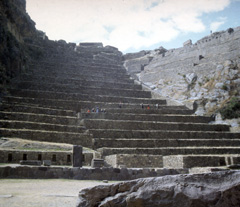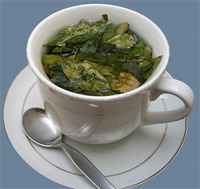
Standing guard over the Urubamba Valley, the Sacred Valley of the Incas, Ollantaytambo’s great terraces and massive stoneworks served as a ceremonial center and fortress, protecting the heart of the Incan empire from its enemies. Its massive structures were crafted by moving giant stones for miles using sheer manpower and ingenious engineering devices. The builders even re-channeled a river to allow the giant stones to be maneuvered across. It was here at Ollantaytambo that the Incas staged their last victory over the Spanish.
In 1536, the Inca ruler Manco Inca led a rebellion against the Spanish invaders. To quell the rebellion, Francisco Pizarro dispatched his younger brother, Hernando, to Ollantaytambo to capture Manco. With a force of 70 cavalry, 30 foot soldiers, and a “large contingent of native auxiliaries,” the confident Spaniards planned a dawn attack to surprise the sleeping Indians, but it didn’t work. The Spaniards were overwhelmed by showers of arrows, spears and boulders, which rained down from the high terraces above the city. Then, by diverting the Patachanca River through previously dug channels, the Incas flooded the plains below the fortress, and the bewildered Spaniards found themselves mired in mud and water up to their horses’ bellies. They had no choice but to retreat.
Pizarro returned, this time with four times the force. The city fell but Manco escaped. Two years later Pizarro captured Manco’s sister and, when Manco refused to negotiate, had her stripped naked, flogged, and shot to death with arrows. He then had her body tied to a raft and floated down the Urubamba River. Pizarro was not a guy to mess with!

 The tea we are offered at the airport, and again in our hotel lobby, is mate de coca—brewed from leaves of the coca plant. Coca is best known to North Americans as the source of the drug cocaine, which is actually a highly processed derivative of the coca leaf. Because of its association with the drug, coca is banned in the U.S.
The tea we are offered at the airport, and again in our hotel lobby, is mate de coca—brewed from leaves of the coca plant. Coca is best known to North Americans as the source of the drug cocaine, which is actually a highly processed derivative of the coca leaf. Because of its association with the drug, coca is banned in the U.S.